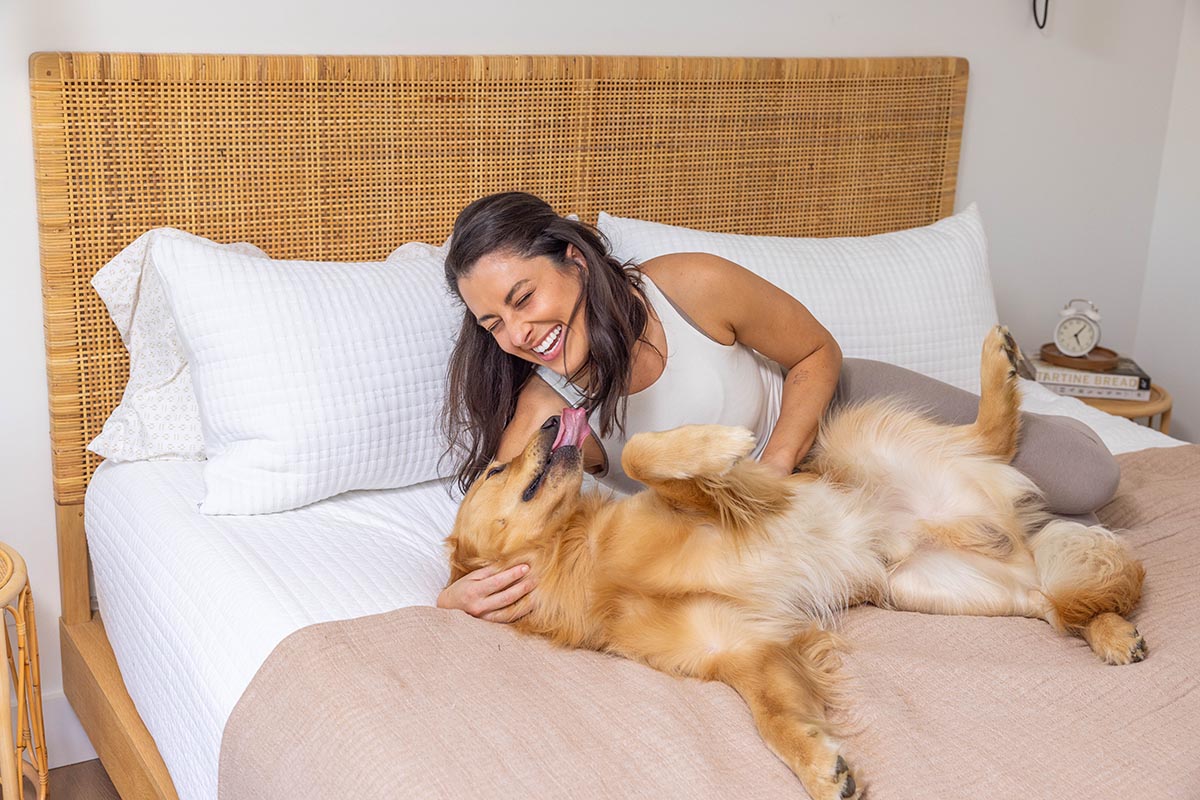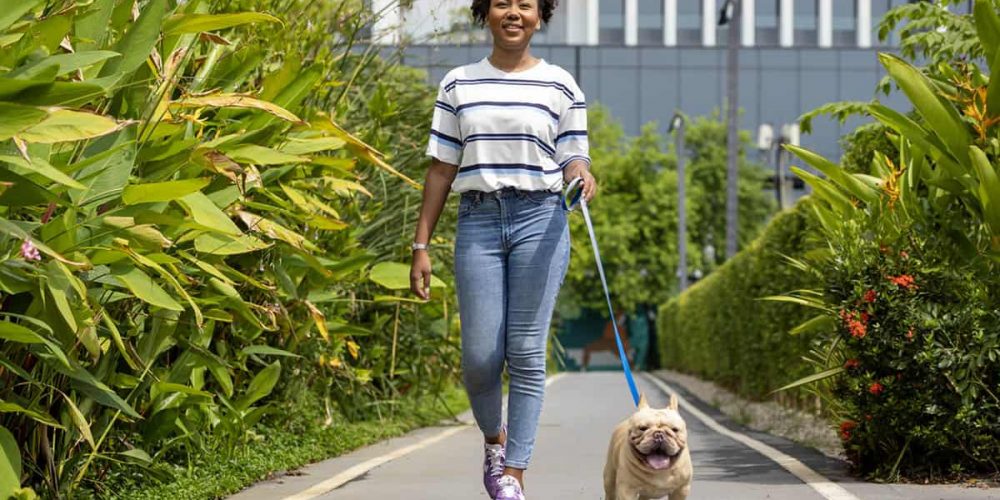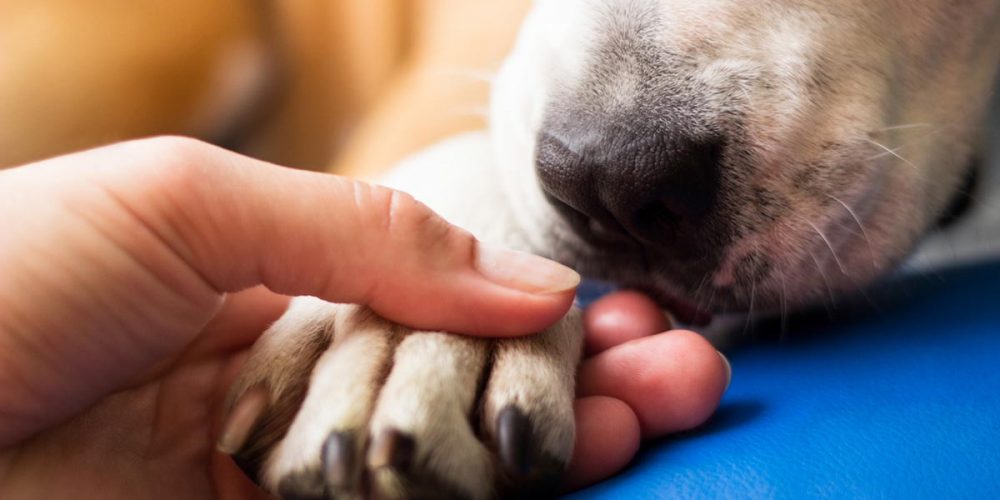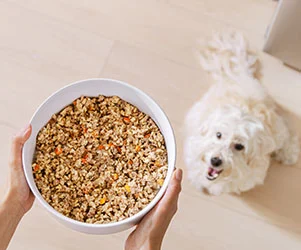Summary
Your dog is talking to you—all the time. 🐶
Not with words, but with their tail, ears, eyes, and posture. Learning canine body language helps you:
-
Build stronger communication and trust with your dog
-
Make training more effective (and fun!)
-
Spot stress, fear, or aggression before it escalates
-
Support your dog’s overall well-being
From wagging tails to whale eyes, play bows to raised hackles—every movement means something.
Certified professional dog trainer Jaime Bast (RVT, CCRP, KPA-CTP) breaks it down.
Your dog is trying to tell you something—but not in woofs and whimpers! Dogs use their whole body to communicate with humans and other animals about what they want and their emotional state, and to show signs of stress.
Once you learn how to recognize common dog body language cues, you’ll see that your dog is talking to you all the time. Listen closely! Let’s dive in.
Why canine body language matters for dog owners
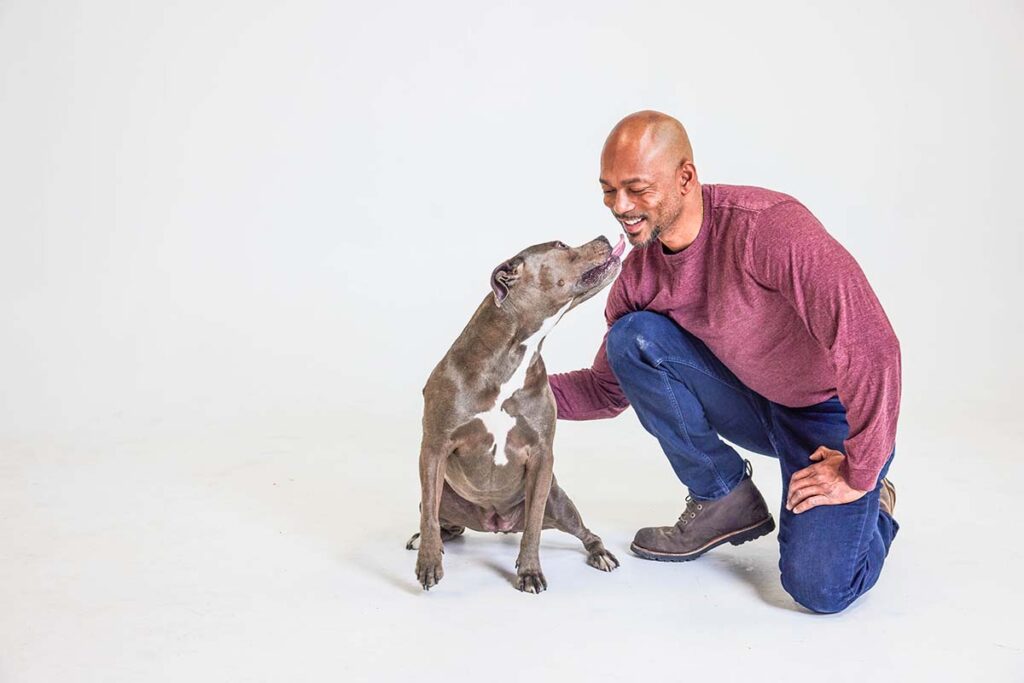
Understanding your dog’s body movements, posture, and facial expressions can help you communicate better and enjoy a deeper bond. Use your knowledge of canine communication to improve:
- Training: Successful dog training is rooted in good communication. Being able to read your dog’s behavior helps make training more effective and fun.
- Safety: Protect your dog and yourself by knowing how to recognize signs of fear and aggressive body language.
- Well-being: Accurately reading your dog’s body language signals helps you meet their needs, helping them feel safe, loved, and satisfied.
10 Dog body language signals every pup parent should know
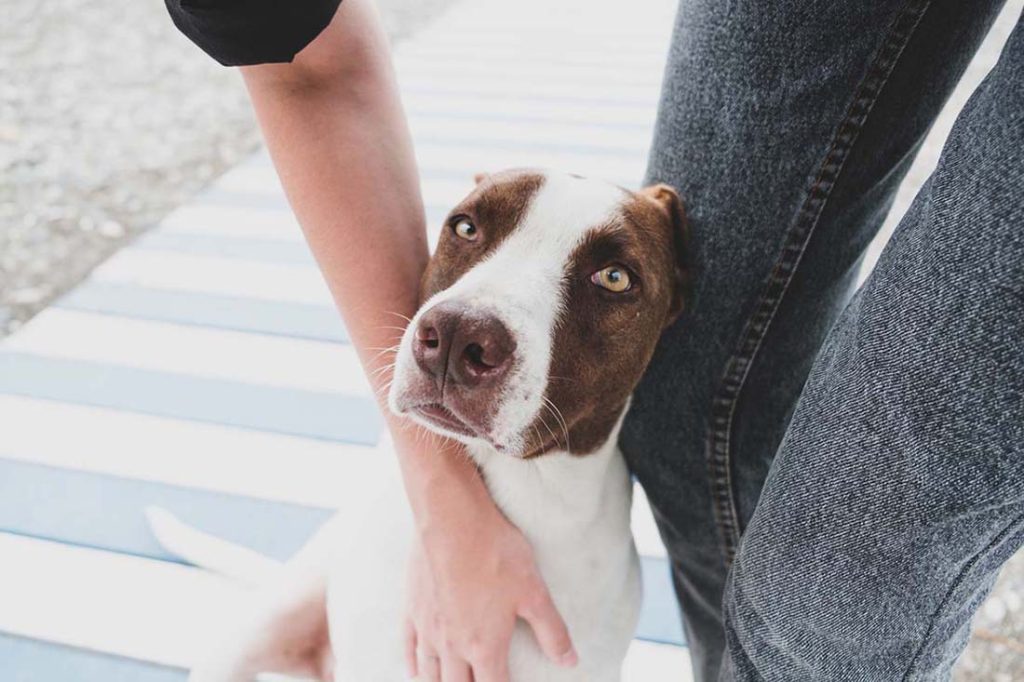
Dogs use their whole bodies to communicate, so you’ll need to read their entire body to understand what they’re feeling and thinking. Always look at the big picture—from their eyes, ears, and lips to the wagging tail’s tip!
Here are 10 common canine communication signals to help you make your dog think you’re reading their mind.
1. Tail wagging
A wagging tail is often associated with a happy dog. But depending on the tail’s position and speed, along with the dog’s posture, it can also also indicate fear, submissiveness, or alertness.
- Happiness or excitement: The dog’s tail is wagging in a relaxed but rhythmic manner.
- Nervousness: The dog’s tail may wag but be tucked or low.
- Alertness: The dog’s tail may wag slowly, in a raised position, and appear stiff.
Tail behavior will also depend on the dog’s breed and its natural tail position. For example, dogs with cropped or bobbed tails may wag their tails faster or wiggle their entire back end, and dogs with high tail sets—like terriers—may look like they’re always on alert.
2. Body posture
Happy or relaxed dogs display an equally relaxed body posture. These dogs may stand or move loosely and may approach sideways with a C-shaped spine. They often carry their heads in line with their backs or slightly lower.
Alternatively, tense body signals such as stiff posture and an upright standing position may suggest alertness, fear, or aggression. These dogs are at full attention and may be preparing to lunge forward or retreat.
Finally, dogs who cower or stay low to the ground are usually nervous and trying to make themselves smaller.
3. Ear positions
Like tails, dogs can use their ears to communicate many emotions. This is most noticeable in dogs with upright ears. Ear signals include:
- Ears forward: Pricked or forward ears suggest alertness and curiosity.
- Ears back: This can suggest fear, submission, or uncertainty.
- Ears flat against the head: Pinned or flattened ears suggest stress or anxiety.
Observe your dog’s ears throughout the day to understand how they normally carry them and what stimuli prompt them to change.
4. Eye contact and eye shape
Eye contact is a powerful form of communication for dogs. Your dog’s eyes can tell you a lot about how they’re feeling. Examples include:
- Soft eyes: This looks like a gentle gaze. Dogs with soft eyes may have an unfocused or loose gaze, blink frequently, and have a relaxed body posture.
- Hard stare: Dogs who stare may be responding to a real or perceived threat. The hard stare includes wide, unblinking eyes and intense, direct eye contact. These dogs may appear stiff overall.
- Whale eye: Whale eye happens when a dog turns their head away but keeps their eyes fixed on something. This causes the whites of their eyes to show. Whale eye is generally a sign of discomfort or stress.
5. Mouth and lip behavior
The level of tension or relaxation in your dog’s mouth and lips can reveal their emotional state. Comfortable, happy dogs may show a relaxed, open mouth and pant lightly. Their lips are loose and not pulled back. Nervous or stressed dogs may pant rapidly, have tightened lips that look pinched at the corners, and may growl or show their teeth.
However, teeth bearing alone isn’t always a sign of aggression—it can be an appeasement behavior, similar to rolling over, meant to communicate that the dog is not a threat and wants to avoid conflict.
Additional lip and mouth signals include:
- Yawning: This is a calming signal meant to provide self-soothing benefits or relax a nearby dog.
- Lip licking: Lip licking without food present can indicate fear or uneasiness.
6. The play bow
In a play bow, dogs lower their elbows to the ground while leaving their hind end elevated. The tail is usually wagging. This posture is a universal play invitation for dogs and communicates friendliness. Dogs in a play group may take turns play bowing to initiate play.
Try a similar posture by crouching low to the floor the next time you want your dog to engage with you or a toy!
7. Pawing and nudging
Dogs may use their front paws to seek attention or comfort, or to initiate play. Depending on the context, this can be a sign of anxiety or a fearful dog who needs reassurance.
8. Raised hackles
Raised hackles or piloerection occurs when the hair along your dog’s neck or back seems to stand up. Although piloerection is often mistaken for aggressive body language, it is more often a sign of arousal—a strong emotional reaction to excitement, fear, or anxiety.
Look at the dog’s overall body position—are they standing erect, cowering, or relaxed?—to determine whether raised hackles are cause for concern.
9. Rolling over or showing the belly
When a dog rolls over and exposes their underside, they may be asking for mercy or a simple belly rub. Depending on the context and the dog’s confidence level, rolling over can be a submissive behavior or one of pleasure and fun.
Pay attention to the dog’s demeanor. Do they wiggle from side to side and have a relaxed facial expression? If so, they probably enjoy the attention. But if they seem tense or show a whale eye, they may need a break.
10. Avoidance behaviors
Dogs don’t always bark or growl when they’re upset. Instead, they may try to escape from what’s making them physically or emotionally uneasy. Avoidance behaviors are your dog’s polite way of telling you they don’t feel comfortable. This may include:
- Turning away or avoiding eye contact
- Moving backward or ducking away
- Hiding
- Avoiding petting or restraint
If your dog shows signs of discomfort, try to remove whatever is causing the stress or take your dog out of the situation to help prevent it from getting worse.
Watch, learn, and listen

Now that you have a better understanding of canine communication, pay attention to how your dog responds to everyday situations. Watching them in familiar moments helps you learn their unique signals and body language.
Remember to always look at the whole body and the whole picture, including the dog’s environment.
Most importantly, show your dog that you’re listening. Respond with patience, kindness, and calm confidence. That’s how trust grows—one body movement or facial expression at a time!
Sources
“Dog Communication and Body Language – Collaborative for Shelter Dogs.” n.d. https://sites.tufts.edu/collaborativeforshelterdogs/dog-behavior/dog-communication-and-body-language/.

